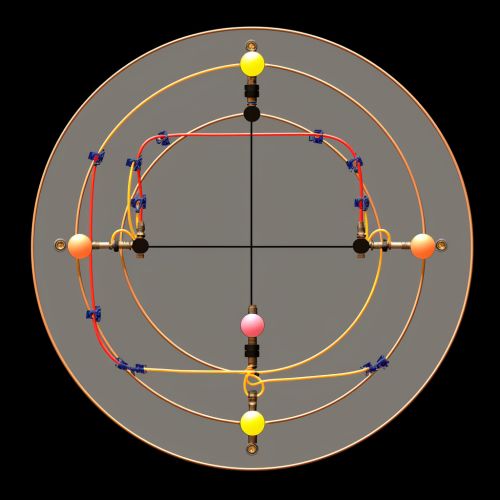Norton's theorem
Introduction
Norton's theorem is a fundamental principle in electrical engineering and circuit theory, named after its inventor, Edward Lawry Norton. It is a simplification technique used in analyzing complex electrical networks. The theorem states that any collection of voltage sources, current sources, and resistors with two terminals is electrically equivalent to an ideal current source in parallel with a single resistor.


Theorem Statement
Norton's theorem asserts that any linear, active, bilateral network can be replaced by an equivalent circuit consisting of a current source (Norton current) in parallel with a resistor (Norton resistance). The Norton current is the current through the short circuit, which replaces the load resistance, and the Norton resistance is the equivalent resistance at the terminals when all independent sources are turned off.
Application of Norton's Theorem
The application of Norton's theorem involves a series of steps which are followed to simplify the analysis of complex circuits. These steps include:
- Identify a portion of the circuit to be analyzed.
- Remove the load resistor from the original circuit.
- Calculate the Norton current (IN) by short-circuiting the output terminals of the network.
- Calculate the Norton resistance (RN) by deactivating all independent sources.
- Draw the Norton equivalent circuit with the Norton current source in parallel with the Norton resistance.
- Reattach the load resistor to the Norton equivalent circuit.
Norton's Current
The Norton current (IN) is the current that flows through the short circuit which replaces the load resistance. It is calculated by applying Ohm's law or Kirchhoff's circuit laws to the original network.
Norton's Resistance
The Norton resistance (RN) is the equivalent resistance at the terminals when all independent sources are turned off. It is calculated by deactivating all independent sources in the original network and calculating the equivalent resistance between the terminals.
Comparison with Thevenin's Theorem
Norton's theorem is closely related to Thevenin's theorem, another fundamental principle in electrical engineering. While Norton's theorem represents a linear, active, bilateral network as an ideal current source in parallel with a resistor, Thevenin's theorem represents the same network as an ideal voltage source in series with a resistor.
Limitations of Norton's Theorem
While Norton's theorem is a powerful tool for simplifying complex circuits, it has some limitations. It is only applicable to linear, active, bilateral networks. It does not apply to networks with dependent sources unless the sources are linearly dependent on the same variables.
